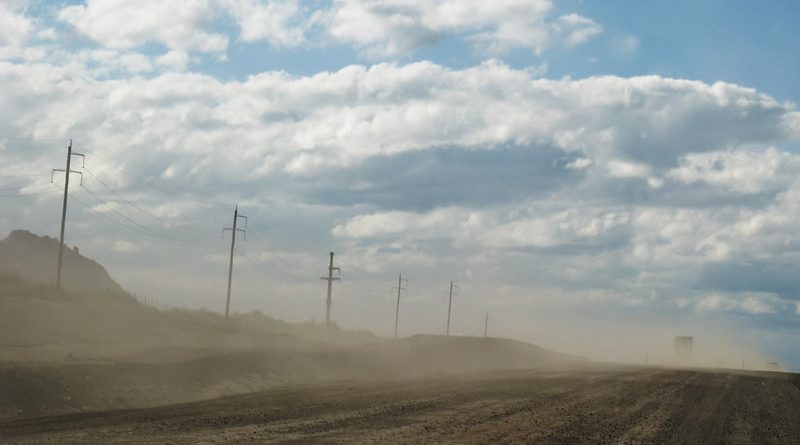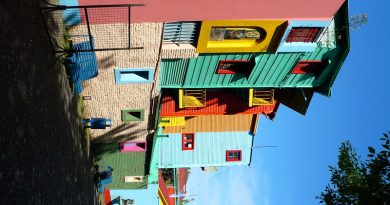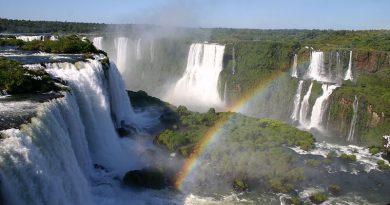The Landscapes of Ruta 40 North
Argentina’s Ruta 40, or Route 40, is one of the world’s great highways. Winding its way from the top of Argentina to the southern tip of the mainland, it covers more than 3000 miles. Most of the highway runs alongside and sometimes within the Andes Mountain range, passing through some of the most extraordinary landscapes on the planet. Our journey took on the northern half of Route 40, from the border with Bolivia to the green and fertile valleys of the wine producing province of Mendoza. Around just about every bend, and there are lots and lots of them, a new, jaw-dropping, beautiful landscape unfolds before your eyes. For those who love the great outdoors, where Mother Nature’s majesty and mystery is on constant show, this is a top of the bucket list journey.
To Argentinians, Route 40 is often described as the Mythical Ruta 40 and any lengthy trip along it is considered a national rite of passage.Just 15 minutes on any given stretch of this highway and you’ll come to understand why.Running down the entire length of Western Argentina the highway follows the spine of the country, uniting the many different regions, cultures and communities. The journey certainly takes you through some truly fascinating cities and settlements, but it’s the landscape that is the real attraction and the northern half of this legendary road offers some of the most spectacular and varied.
Starting in the far north, just south of the border with Bolivia, in Argentina’s Jujuy Province, Route 40 takes on some of the most remote and difficult terrain of its entire length.Much of the road here passes through the heart of the Andes and across its vast and lonely high altitude plains – saturated in moody pastel colours.>A short detour West off Route 40 will take you to the Laguna Pozuelos, a large high altitude lake that has gained protected status because of its wealth of bird life.Pink Flamingos flock here in the hundreds and their pinkness rippling across the lake is a site to behold as is the lake itself which casts a mysterious spell of serenity across an otherwise rugged landscape.This is also llama country and a considerable number of indigenous llama farmers populate the area, living life in much the same way they did hundreds of years ago, before the Spanish arrived.
Northwest Argentina was once part of the mighty Inca Kingdom, the Inca being South America’s cultural and military powerhouse in the 15th and 16th centuries with a capital based in Peru’s ancient mountain metropolis of Cusco.
Llama farmers herding their flocks are a common site in these parts as is the lone indigenous old lady, dressed in brightly coloured woven wool and carrying heavy loads on her back. For some reason you only seem to encounter these walking paragons of stamina miles from anywhere, peacefully chomping on their coca leaves as they march, disinterested in the metallic motor vehicles that momentarily shatter their commune with nature. All I can say when I see these ladies is, ‘respect’. Where they are coming from or going to is somewhat of a mystery as there is seldom a settlement for tens of miles in any direction.
If you travel off Route 40 in this far northern region of the country you can see some amazing natural wonders. The giant brilliant white expanse of the salt flats near Susques for example or Purmamarca’s kaleidoscopically striped seven colours hill, but you don’t need to take any detours to be impressed, natural beauty is abundantly visible from your car seat window.
None of Route 40 is paved in these parts and the driving can be tough going. Near Abra de Acay the dirt and gravel road reaches an altitude of more than 15,000 feet, the highest point on the entire highway. If you suffer from altitude sickness be prepared. From there it’s downhill all the way to the idyllic little Spanish Colonial village of Cachi in Salta Province.
Cachi’s white washed architecture is a tonic for the soul and its numerous restaurants and hotels provide a welcome stop for weary travellers planning their next journey. The area around Cachi offers some wonderful expeditions into the countryside, including the Cordon Cactus forests of a gently sloping plain called the Enchanted Valley just a few kilometres north.
But continuing South on Route 40 will take you through some of the most beautiful and varied landscapes of the whole journey. Just South of Cachi you enter the Valles Calchaquies, a network of valleys that display an incredible range of terrain and vistas.
The green, cacti filled Andean foothills soon give way to dusty red rocks and culminate in a bizarre area of sharp slanted pinnacles known as the Quebrada de las Flechas or Canyon of Arrows. Anyone familiar with the weird biblical landscapes of the Italian Medieval painter Giotto might well feel they’ve entered into one of his paintings. We nick named it ‘Dante’s Inferno’ because of its eerie, desolate and timeless atmosphere. The angle of the rocks here give the impression that the earth is still in motion busy creating a new skin.
The Canyon of Arrows flows into yet another remarkable valley. The Conchas Canyon follows the river of the same name, with its soft green banks bordered by sumptuous pink toned mountains. Then, as if to reward you for all your rugged driving, you hit paved road as you enter the lush green valley’s surrounding the town of Cafayate.
Known for its excellent Torrontes wine, Cafayate is the second most popular wine region in Argentina and a holiday destination for Argentinians looking to relax and indulge. The town seems to float in a sea of deep green vineyards. If you have time, stop for a delicious glass of Torrontes in one of the many beautiful old bodegas of the area or treat yourself to some wine flavoured ice cream in the town’s local heladeria.
From Cafayate the road is straight and paved for several hundred kilometres taking you past a string of charming Spanish colonial towns and bodegas as well as the ancient indigenous ruins of Quilmes. This is a world away from the high altitude plains near the border with Bolivia. Here culture, history and natural beauty work in sensational harmony.
The journey southward on Route 40 is filled with remarkable sites but by far the most impressive lie nearly 500 kilometres south of Cafayate. The nature parks of Talampaya and Ischigualasto are two of Argentina’s most precious jewels and easily rival the best of the Wild West desert landscapes of the United States.
Talampaya centres on a deep red rock gorge created by centuries of erosion. If there was ever a time to get out of the car and work those leg muscles, hiking or even cycling through the park, this is it. For those with restricted mobility, the park offers a choice of tour vehicles too. Your own vehicle must stay in the car park at the visitor centre.
With incredibly sheer, deep red cliff walls rising to nearly 150 meters, Talampaya’s canyon is the main attraction here. It is also home to a variety of wildlife including guanacos, desert foxes, the ostrich like rhea, and condors that nest high up in the cliff face.
Providing a natural shelter from the elements, except in February when the flash floods can turn the whole canyon into a raging river, the area was home to ancient indigenous communities and many of its rocks are adorned with centuries old petroglyphs.
The canyon opens out onto a huge prairie like expanse dotted with the towering remnants of cliffs. The shapes of these red rock outcrops have been given names to fit their appearance. Among the many shapes on display here are The Monk and The Tower, but it can be fun to make up your own names.
In contrast to Talampaya’s red rock majesty is the hauntingly bizarre Ischigualasto Park just 60 miles away. The strange and unique geological formations of Ischigualasto, with their monochrome tones, has earned it the name, Valley of the Moon, and it’s easy to spend the entire day exploring the variety of otherworldly landscapes on display.
Ischigualasto is a geologist’s paradise and is believed to be the only site in the world where all three stages of the Triassic period can be seen contiguously in one place. But the park has another claim to fame, as home to one of the most extraordinary finds of Dinosaur fossils in the world. You’ve heard of Jurassic Park, well this is the even older, Triassic park!
Two hundred million years ago both Talampaya and Ischigualasto hosted a range of dinosaurs and the fossils found here come from some of the oldest in the world. Ischigualasto continues to yield a seemingly never ending treasure trove of unique fossils to this day and digs regularly take place with some spaces open for tourists eager to make the next paleontological breakthrough. Recently scientists have discovered what can only be described as a dinosaur toilet. Shedding light on the surprisingly sophisticated habits of these extinct giants, the site has been described as the oldest toilet in the world and specimens of fossilised dino poo are considered so important that they have been put on display in a museum.
Ischigualasto has its own very unique rock formations as well, including the Sphinx which looks exactly like a miniature version of the Egyptian wonder, only this Sphinx was crafted by Mother Nature’s tools, wind and rain. Other shapes in the park look like something straight out of a Road Runner cartoon and you can visit most of them in the comfort of your own car as tours of the park take place in convoy led by a guide.
Continuing south along Route 40 takes you into the green and pleasant valleys of Mendoza. This is Argentina’s premier wine region and you are spoiled for choice when it comes to bodegas to visit, most of which offer tastings of their local produce and places to stay the night. With an average temperature of 70 degrees fahrenheit year round and set against the backdrop of the Andes highest peaks, Mendoza is some people’s idea of paradise on earth.
Even if you’re not into wine there is plenty to see and do here. Just a short drive into the mountains opens up a whole range of outdoor activities, from white water rafting to horseback riding, soaking in natural hot springs to a challenging climb to the top of the tallest mountain in all the Americas, Aconcagua.
It’s impossible to describe all of the extraordinary landscapes along the northern stretch of Route 40 and if you make it from one end of the highway all the way to Mendoza you can console yourself with the fact that you’ve only covered about half the journey. To the south lies Patagonia, one of Argentina’s most remote and legendary regions, offering up a whole new range of natural wonders to explore and experience. So, fill up that tank and make sure you’ve got plenty of water, it’s going to be a breath taking ride.




